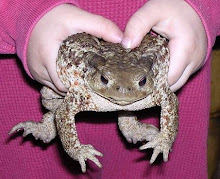
An acquaintance of mine suggested I'd sell more work if I stopped drawing all these naked people and did some baby animals or something. Since, so far I've never sold anything, I couldn't really test this hypothesis, so rather than argue I went ahead and sketched, carved and just finished printing the keyblock proof on a little piece that shamelessly is pandering to that market. I haven't decided yet if I'll carve the color blocks or just leave it black and white. Nor can I decide whether to print it in a special limited edition to artificially inflate it's value or leave it open, to better anticipate possible future demand. My eight-year-old son, said, "Dad, I think that's the best drawing you've ever done." But, he likes worms.
This is the real hero of the organic farm and garden. Given the right environment the various species of earthworms will aerate the soil, improve soil texture, fertilize and help remineralize the soil, improve both drainage and water-holding capacity providing drought resistance and preventing runoff. Pictured above would be be Lumbricus terrestris or the nightcrawler. He/She (a true hermaphrodite, the earthworm contains both male and female sex organs) emerges at night or during rains and pulls surface debris (leaf litter, compost, straw, etc.) into their vertical tunnels that can penetrate the soils to 8 ft. Makes decent bait if you're into fishing and is sure to gross out half of any audience by it's size, color and movement. They lay 70-80 small, translucent lemon shaped egg cocoons each year each which will hatch into minuscule baby worms.
Your compost pile however would be home to Eisenia foetida or the redworm. She's red to red-brown and thinner and shorter. These worms tend to live above ground in leaf litter, compost piles or manure heaps breaking down the debris to worm castings, a mixture of soil, carbohydrate slime, and digested nutrients. Very prolific, a cubic yard (3' X3'X3') can hold up to 100.000 worms. These are the cuties used by worm farms for fishing bait or to provide live worms to those who want to start vermiculture or worm-composting bins in their yard or under the kitchen sink. They arrive in those little cardboard boxes that chinese food comes in. I always found that amusing.
The enemies to the earthworm aren't limited to the foraging robin, crow, toad or hedgehog. Damage on the organic farm comes from tillage. The plowing, ripping or rototilling of the surface soils to prepare the fields for planting are very harmful as the steel blades chop up the worms and can drastically reduce their numbers. On conventional farms the real damage however is from both deep tillage-often to depths of a meter and the use of harsh chemical pesticides and herbicides that kill them or deprive them of food or cover.
Earthworm numbers are considered a good barometer for soil health in the organic farming community. In our organic farm in Italy, the organic fields are full of worms; each shovelfull will reveal 2-3 of the big ones and lots of little ones. A layer of leaves or compost mulch will disappear over two to three weeks as the worms pull the debris down into their burrows. In contrast, our bottom fields, farmed conventionally by another farmer (with erbicides and pesticides until very recently and deep plowed every summer) had none when I went looking several years ago. Shovel in hand I walked over the fields and turned up just heavy clay with the occasional antpile or cricket uncovered.
This woodblock print was printed from a small board of hard maple. It measures 4 1/2" X 9" and is the keyblock for what will hopefully become a color print if I can manage to carve the color blocks and figure out how to mix just the right shade of "Nightcrawler Pink" from my limited palette of watercolor colors.

Fab worm, maybe at an organic gardener's convention or...........
ReplyDeleteHuuuhhhmmm makes me wanna go fishin'...
ReplyDeleteIsnt that a cute baby worm!
ReplyDelete